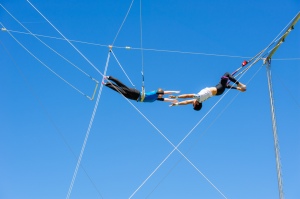
Cookie Monster, a philosophical Muppet who now enjoys cookies in addition to a well-balanced diet, comes out to greet Marine families during a USO performance of Sesame Street Live aboard Marine Corps Air Station New River. During the show, Cookie Monster gave advice to Marine families about moving away from friends.
This year Sesame Street (http://www.sesamestreet.org), a long-running children’s television program grounded in education research, has followed a curriculum in STEAM!!
Okay, you may wonder, why should educators at the university level care?
Here’s why we should care:
- Universities prepare early childhood education teachers. If their university-level STEM training includes STEAM, early childhood teachers can build on the Sesame Street STEAM curriculum in their own classrooms.
- We do and will continue to have STEM majors who have experienced STEAM at the preK-12 level. We can take advantage of these funds of knowledge in STEAM that our students bring to the classroom.
- Pre-K and university efforts in STEAM bear remarkable similarities, as evidenced in the Sesame Street curriculum document that supported this year’s work (STEM+A Curricular Seminar Summary: Science, Technology, Engineering, Mathematics and Art). In many passages one could simply swap the word student for the word child to produce something that looks like an argument for STEAM in higher ed. Quite a few of the examples of content (not included here) are also adaptable to the university level. Greater communication across all levels of teaching and learning will move us forward faster.
Check out these quotes from the document:
“We can also help make the connection between scientific and innovative thinking to clearly demonstrate that the Arts can be used to inspire learning and teach STEM concepts. These process skills enable children to formulate thoughts into investigable questions, solve problems, and allow for the learning of new concepts and “big ideas” to become apparent and meaningful.”
“We can also help make the connection between scientific and innovative thinking to clearly demonstrate that the Arts can be used to inspire learning and teach STEM concepts. These process skills enable children to formulate thoughts into investigable questions, solve problems, and allow for the learning of new concepts and “big ideas” to become apparent and meaningful.”
Articulation across all levels of education, including high quality children’s programming, is important as we work to improve STEM teaching and learning.
Plus, who doesn’t love Sesame Street? Tell me, who’s your favorite muppet??
[While Sesame Street is a driven by a whole-child curriculum, they revise their curriculum to highlight specific educational needs. To address these needs, they invite advisors (academics, researchers, teachers, parent engagement professionals, and others) to join them for a curriculum seminar in which they present their research and experience. Colleagues at Sesame Workshop were kind enough to share with me the confidential curriculum document that resulted from the Season 43 curricular seminar on STEAM. Thank you, Sesame Workshop!]





You must be logged in to post a comment.